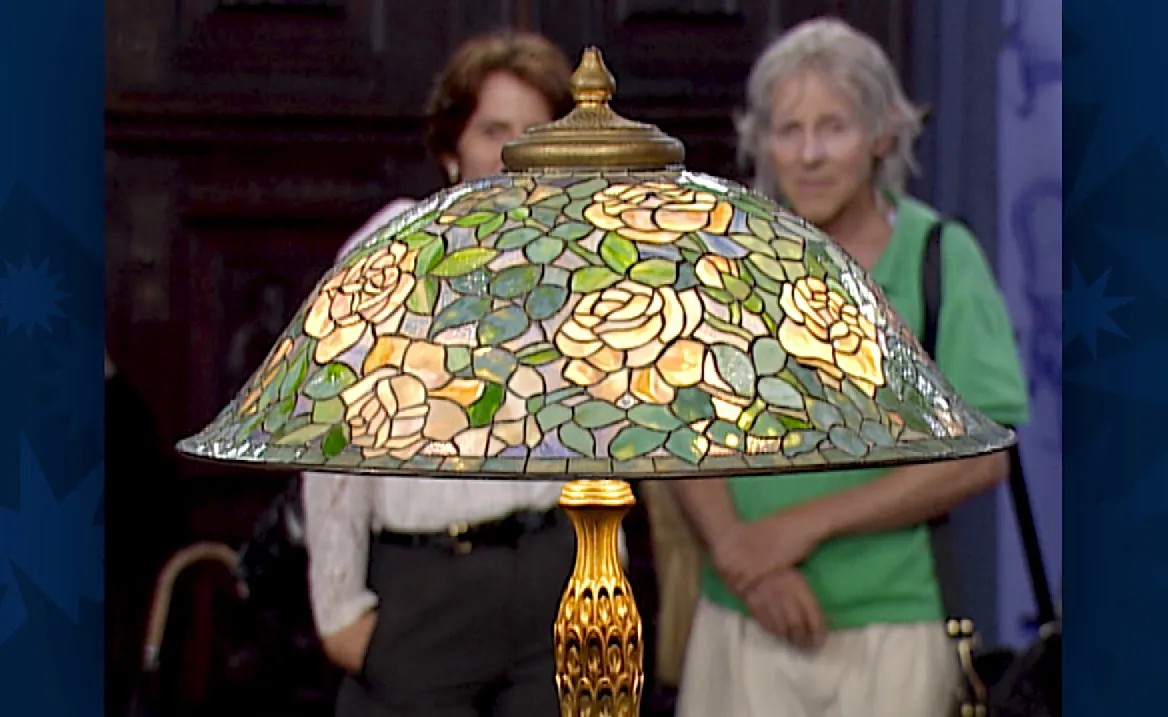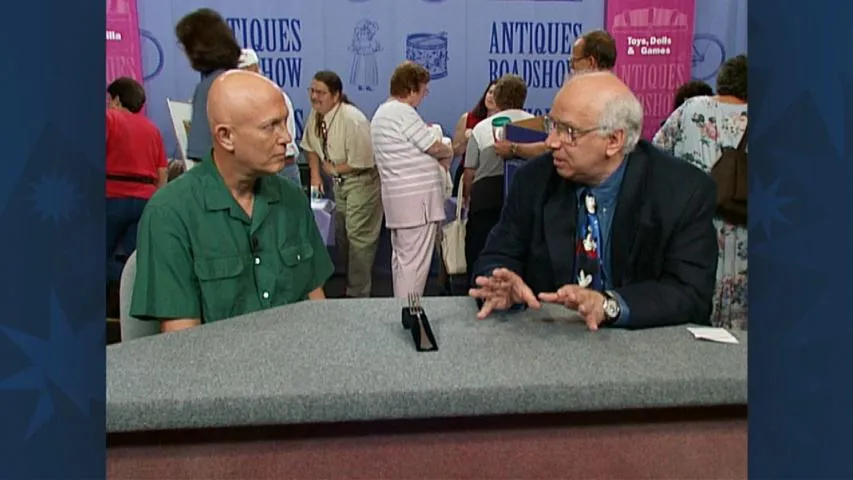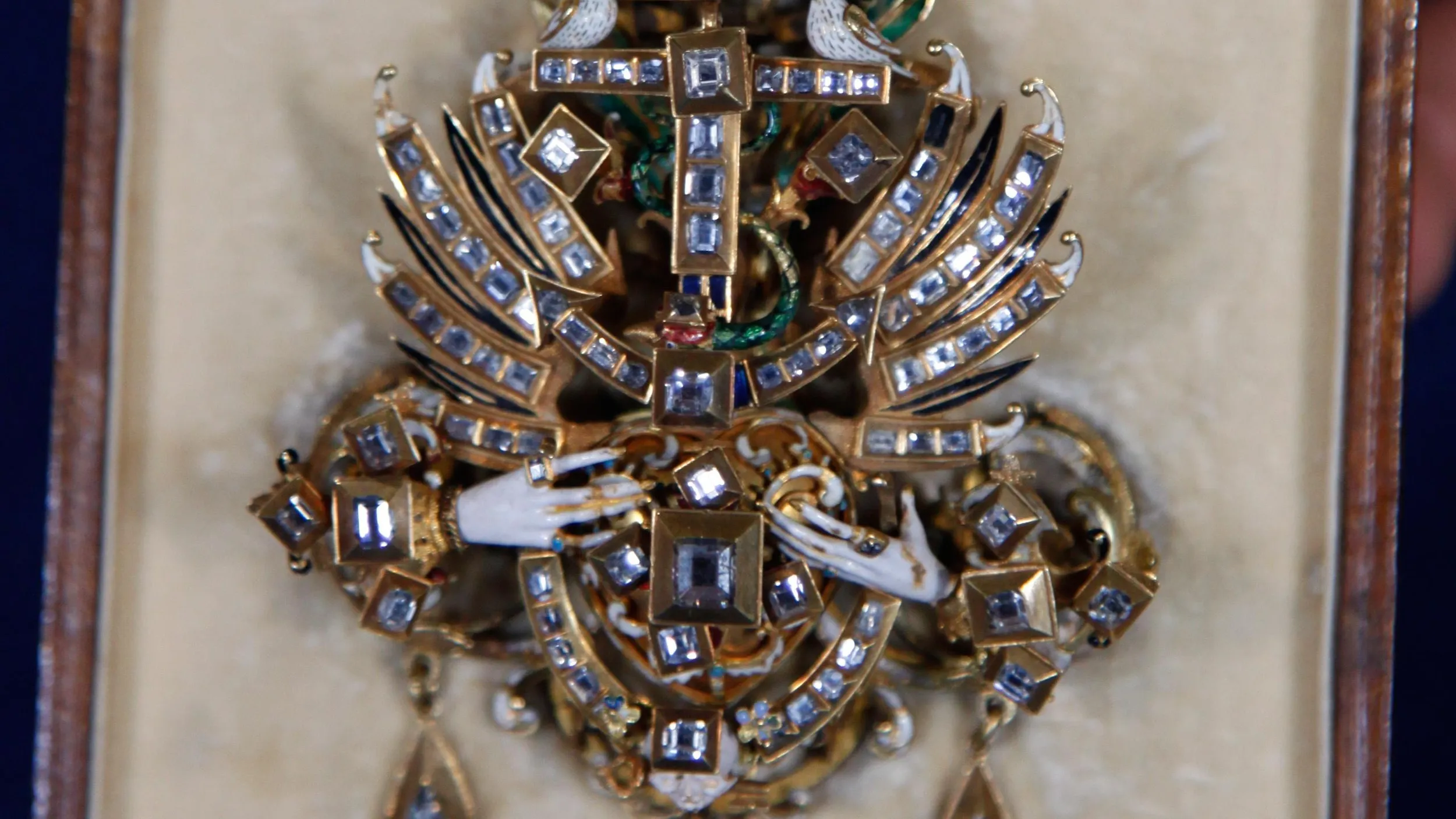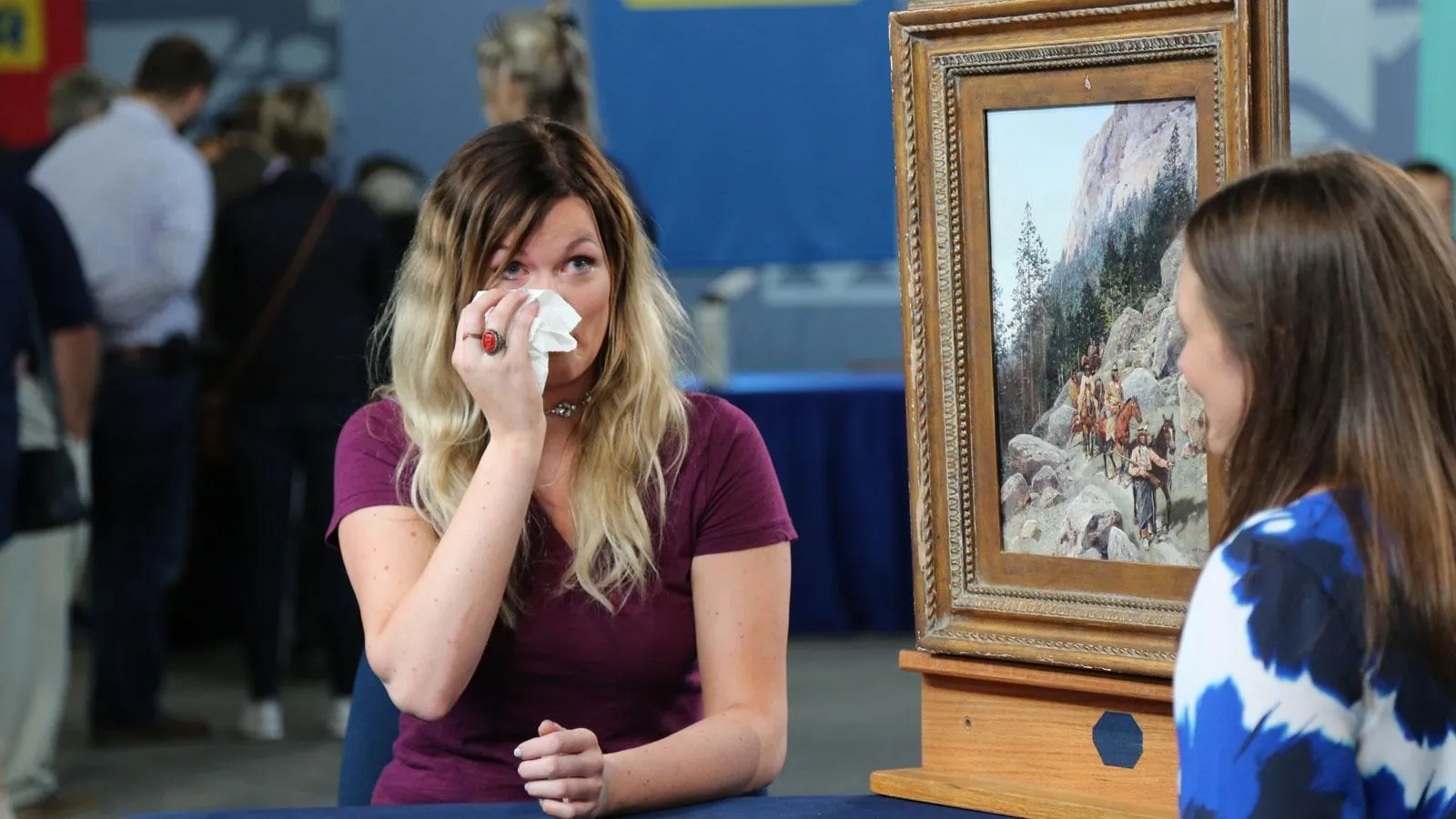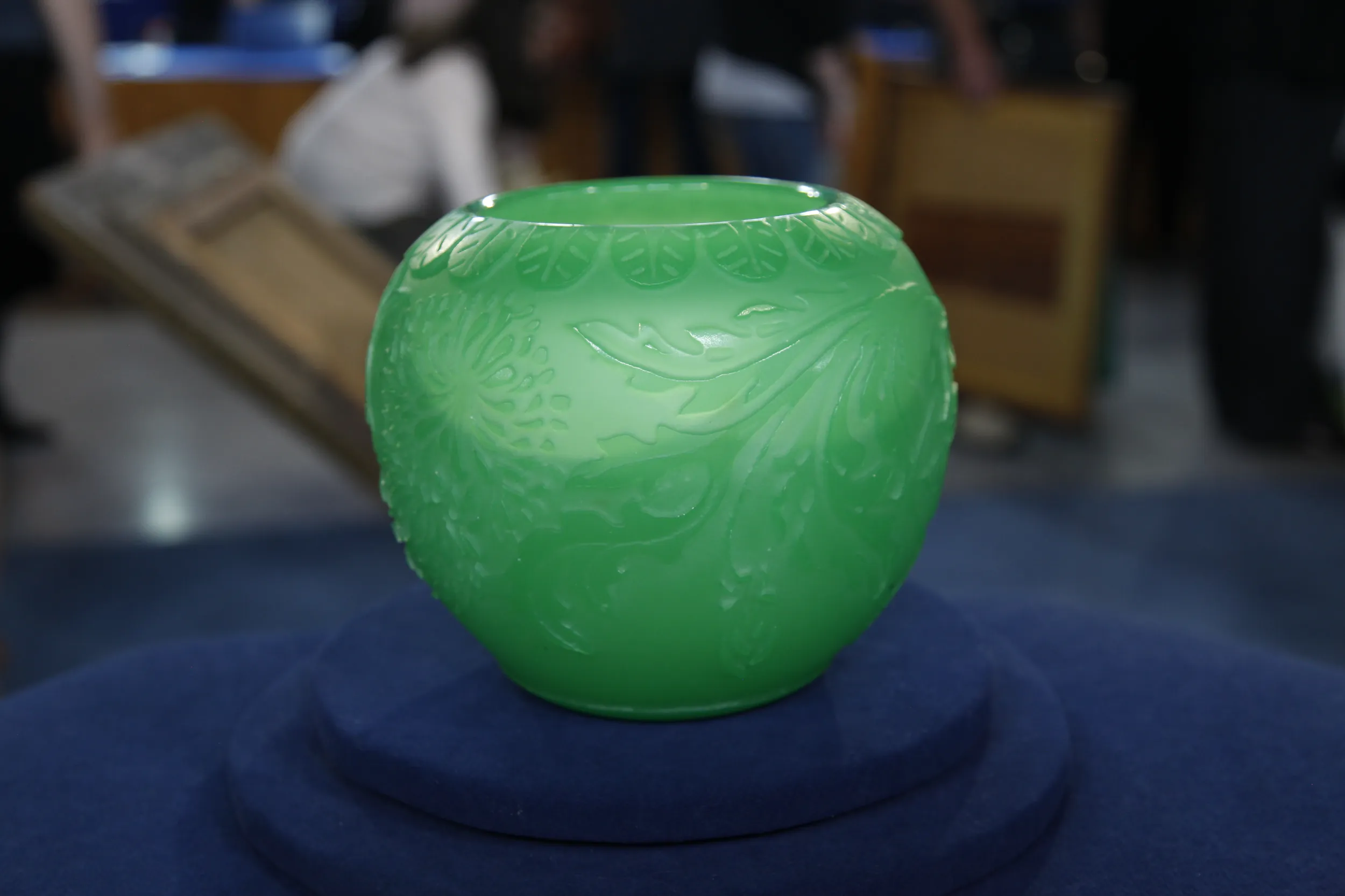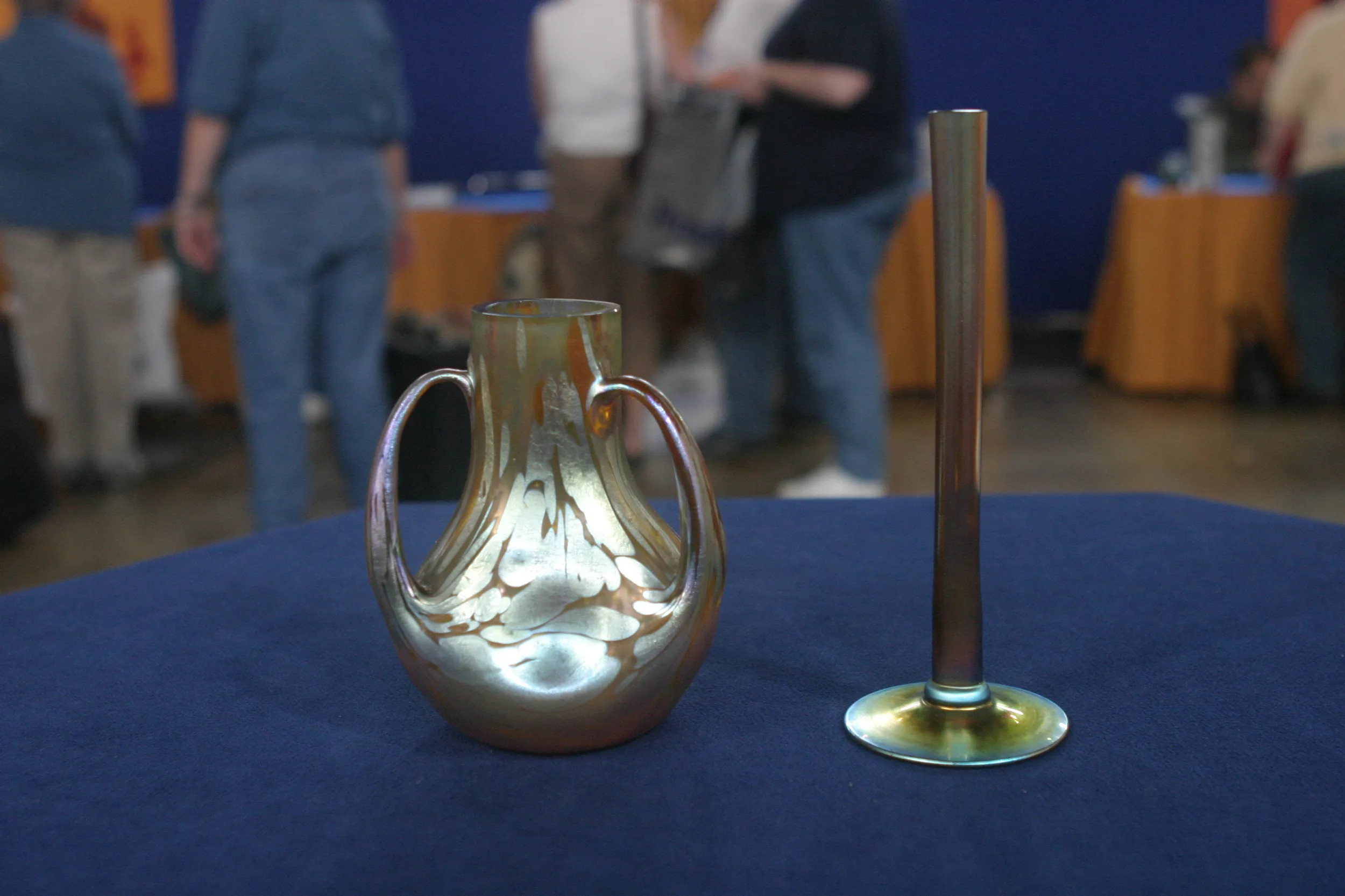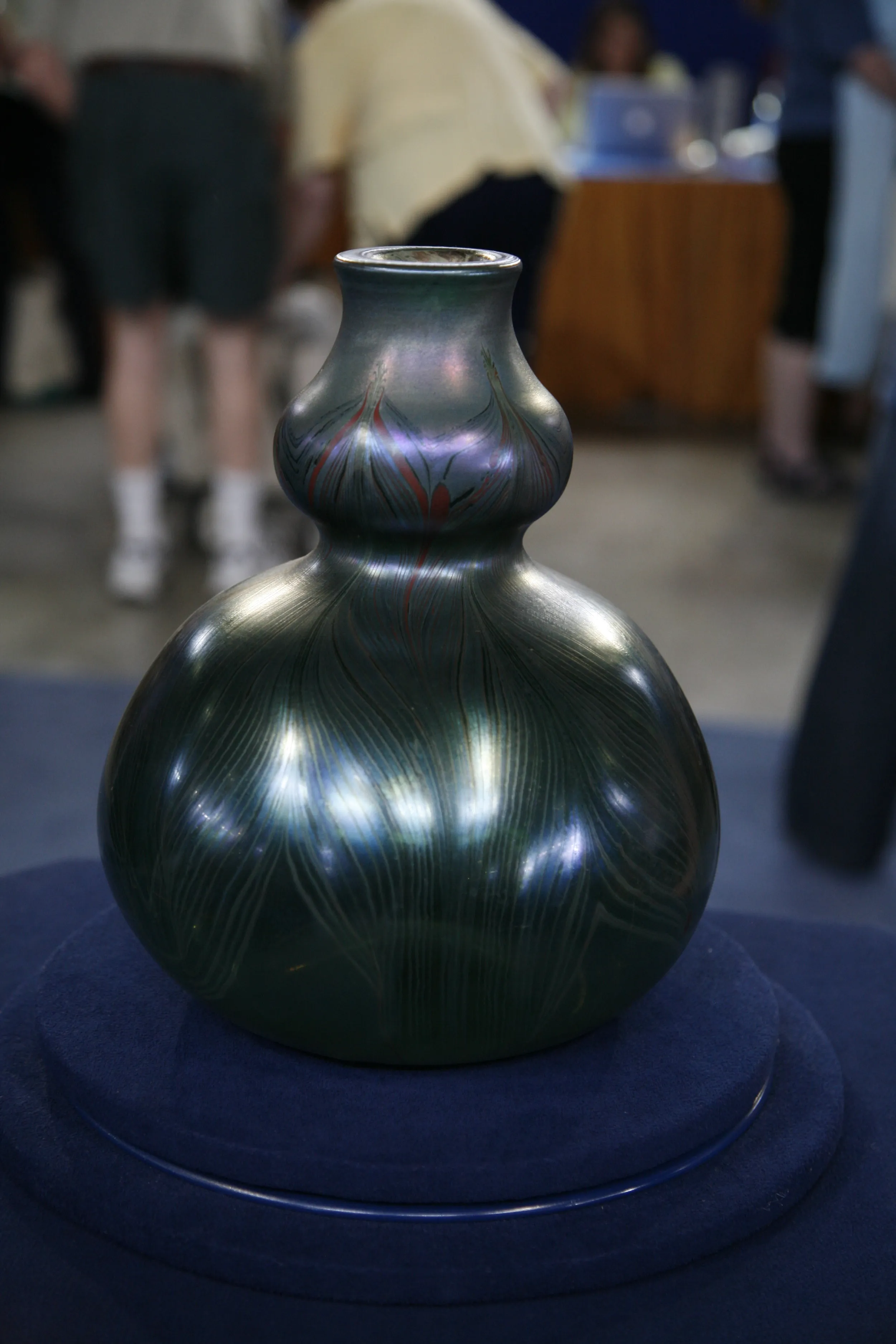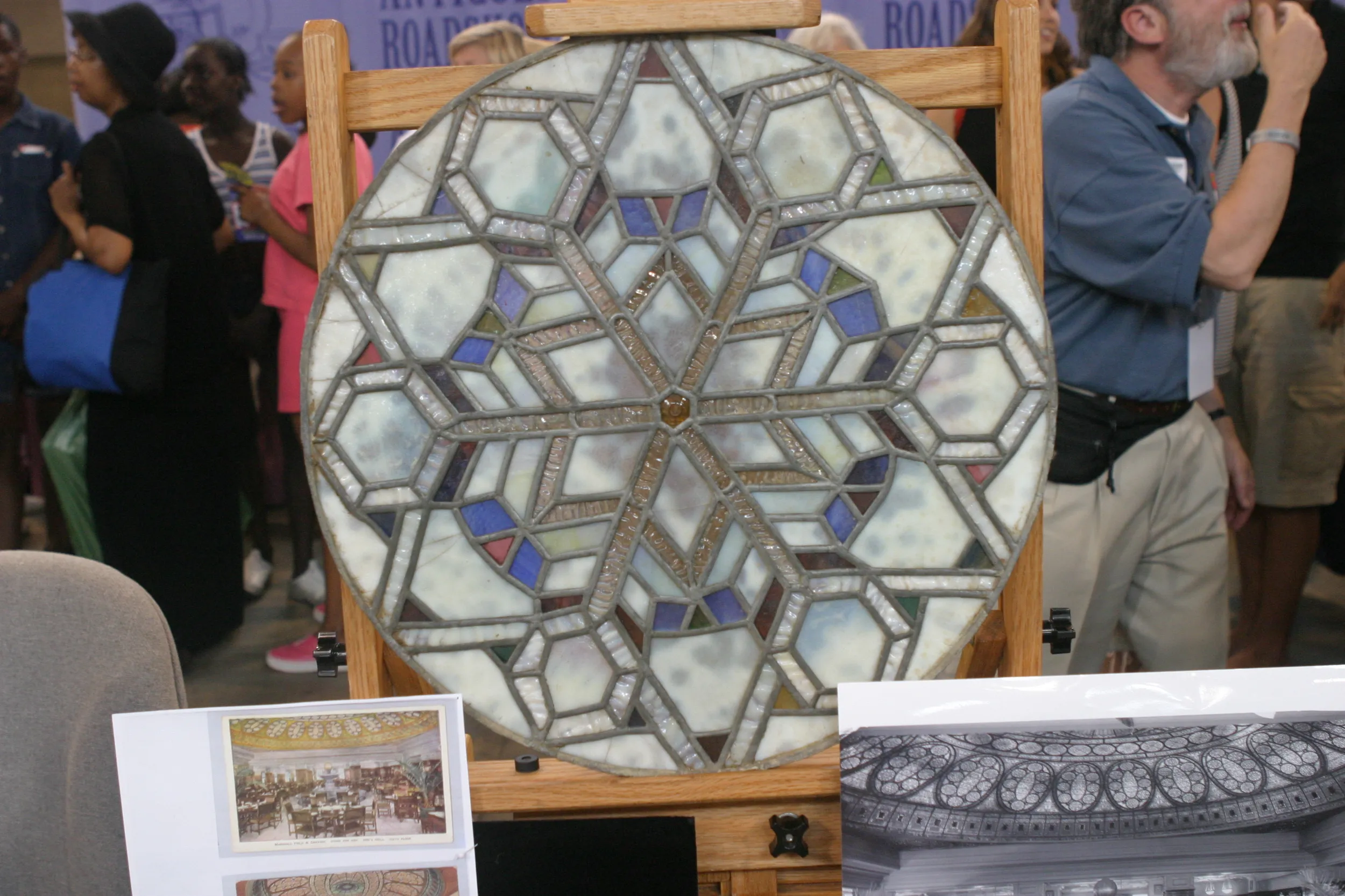GUEST: My mother found this in the late '60s. There was a little neighborhood newspaper flyer and she read that there was a glass lamp for sale. And my mother saw it, knew was it was.
GUEST: And the woman, she also knew what it was. It had belonged to her grandfather. And she had moved into a very small studio apartment. And it was just too large, and my mother asked her, "Well, what would you like for it?" And, uh...
GUEST: She said $125. Right. $125. So my mother...
GUEST: "Whoo," went to the bank real quick.
GUEST: Purchased it, and has had it ever since.
APPRAISER: And your family has taken very good care of it.
GUEST: Yes.
GUEST: Well, there's five of us, and, uh, my mother did hide it.
GUEST: She had it hidden away in the house.
GUEST: Special hiding place in the... And, 'cause we were kind of rambunctious, and, uh, it has just recently emerged.
GUEST: Yes.
APPRAISER: Well, let me tell you a little bit about your lamp. You do know that it was made by the Tiffany Studios, which was the firm that was owned and operated by Louis Comfort Tiffany, who was the son of the founder of Tiffany & Company. This probably dates from 1905. The shade is called the rose helmet shade. The "helmet," of course, refers to the shape, looking like a helmet.
GUEST: Mm-hmm.
APPRAISER: It rests on this absolutely magnificent example of a Tiffany base. It has a wonderful Art Nouveau quality to it. And it's called the Arc and Leaf. And if you look down closely to the base, you will see these wonderful stylized leaf forms that follow all around the edge, and then are repeated in slightly different style moving up towards the top of the base. Over the years, the bases and the shades can get separated, and what's very interesting about this base is that I believe that this has stayed together all these years. If you notice, under the shade, this is gold leading. And the gold leading matches the gold on the base. And I have to say that the base is really unusual. I can count on one hand how many times I've seen this base, it's so unusual. This is a situation where the base is almost as great as the shade. These were always luxury items when Tiffany was making them. You would find them in the homes of many of the people who belonged to New York society. This lamp probably cost in the neighborhood of maybe at least $200 to buy, and that was a lot of money in 1905, absolutely.
GUEST: Back then, it was a lot.
GUEST: The woman who was selling this, because she did know it was a Tiffany...
APPRAISER: Yes.
GUEST: ...she had taken it into two dealers.
APPRAISER: Mm-hmm.
GUEST: In her area.
APPRAISER: Right.
GUEST: And the, the one dealer looked at it and she said, "It's not a Tiffany, it's the wrong finish on the base."
APPRAISER: Okay.
GUEST: And so she was turned around by two different dealers.
APPRAISER: Okay, well, that's okay. This is called the etched dorè finish, it's as right as rain. There's just, everything is beautiful about this lamp. Now let me just give you the good news. This lamp is worth between $80,000 and $125,000.
GUESTS: (both exclaim, sniffling)
APPRAISER: Mom had a good eye.
GUESTS: (both laughing and crying)
APPRAISER: Congratulations.
GUESTS: (laughing and crying)
AUDIENCE: (applause)
APPRAISER: I have to give you guys a hug.
GUESTS: (women sobbing)
APPRAISER: Isn't it great to get news like... Oh, you're so cute! This is great. Wow.

